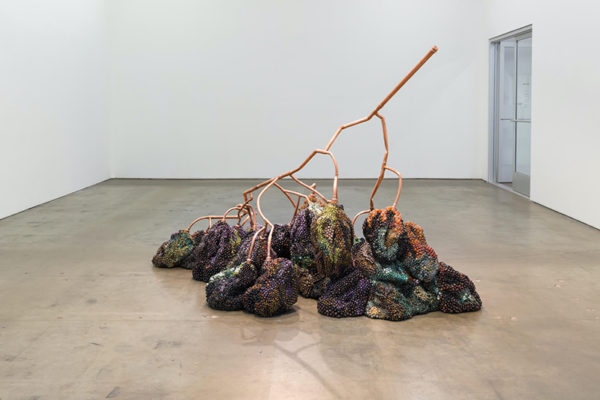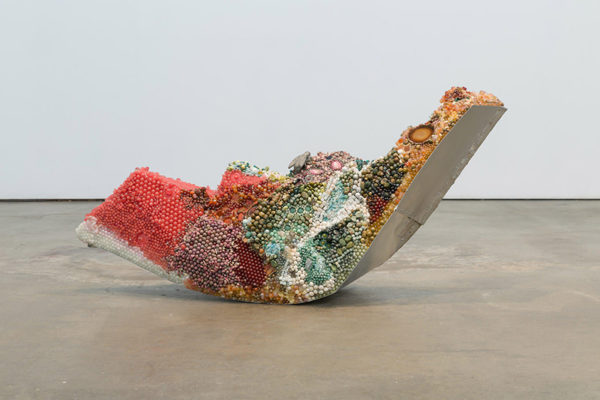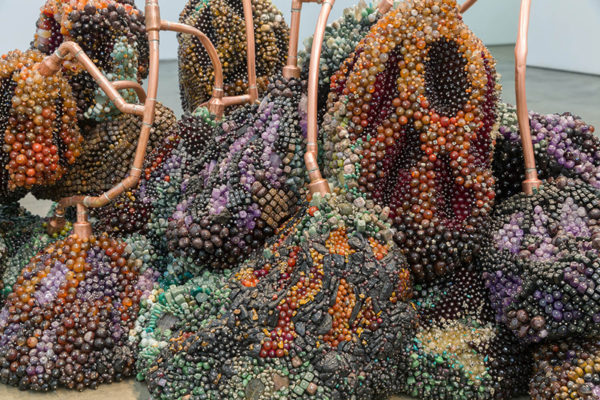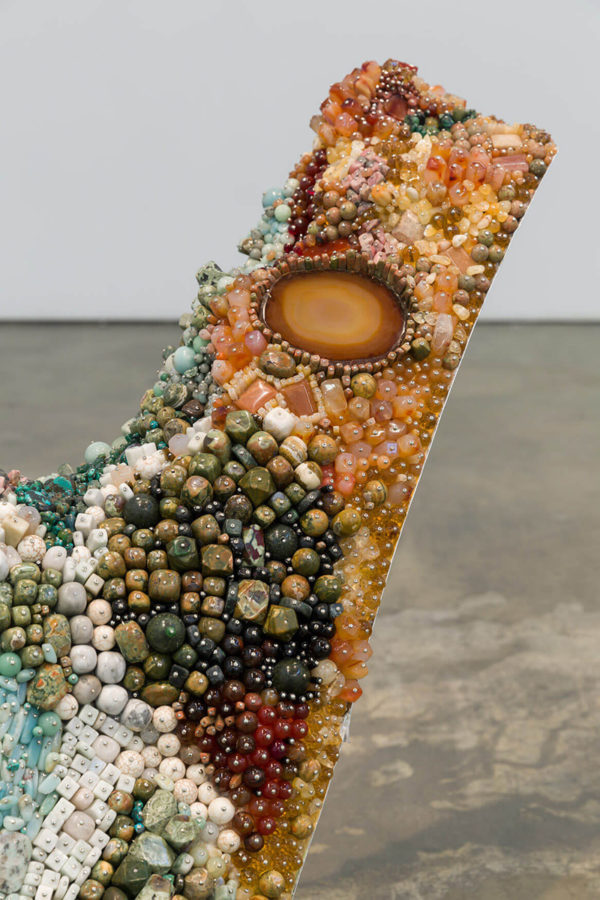Kathleen Ryan’s second solo show at François Ghebaly, “Bad Fruit,” is a masterclass in contemporary object-making. In her massive fruit sculptures, the duality of decay and the cycle of life is on display as Ryan combines the industrial with the natural, the glamorous with the ignominious, and the old with the new, all while questioning the essential nature of material consumption.

Kathleen Ryan, Bad Grapes, 2020
The first encounter with Ryan’s work is the aptly named Bad Grapes, which sits alone in the first room of the gallery. The desiccated mass lies lifeless on the ground, appearing on the verge of internal collapse; and yet, the sculpture solidifies, as the thousands of glass beads and stones glint and shimmer, showing stability. This stability is reinforced with the copper pipe stem, which stands rigidly in contrast with the deflated orbs of the grapes. The subsequent rooms contain the collected shards of a discarded watermelon, burst asunder seemingly from its own internal pressure, and collecting mold and insects. Ryan again uses glass beads and stones to form the flesh of the fruit, but the rind of the melon is something new: the recycled husk of a 1973 Airstream van, complete with a lifetime of scratches, rust and dents. Flat, gray metal becomes a glittering semiprecious stone, just before disappearing from view again. Stonework insects and green mold ravage the flesh of the shards and threaten the integrity of the fruit itself. One of the largest chunks occupies the better half of a small room, roughly 9 x 5 feet tall, forcing the visitor to navigate around the piece and consider its mass and dimensions.

Kathleen Ryan, Melon (Moldy Slice), 2020.
While the exhibition is superficially about decay, Ryan actually wants us to engage with the entire process of living—including inevitable decay. In each sculpture, there is a reminder of the vibrancy of life and the continuation of the cycle in which we are all beholden. These sculptures are created out of the immortal materials of stone and metal; and the essential nature of the art object is one of undying, creations and ideas which will exist beyond our limited lifetime and hopefully inspire those that will come after us to continue creating.

Kathleen Ryan, Bad Grapes, 2020 (detail)
Through her work, Ryan is imploring us to consider our own consumption; what food do we allow to go to waste, what materials go unused and unloved? Take, as an example, the Airstream: this literal recycling of the airstream imbues the material with new life, even if it is beyond its originally intended purpose as a vehicle. Ryan’s sculptures illustrate the realities of life, art and consumption in 21st-Century society while showing the viewer how we can overcome this challenge through the inventive use—and reuse—of materials.


